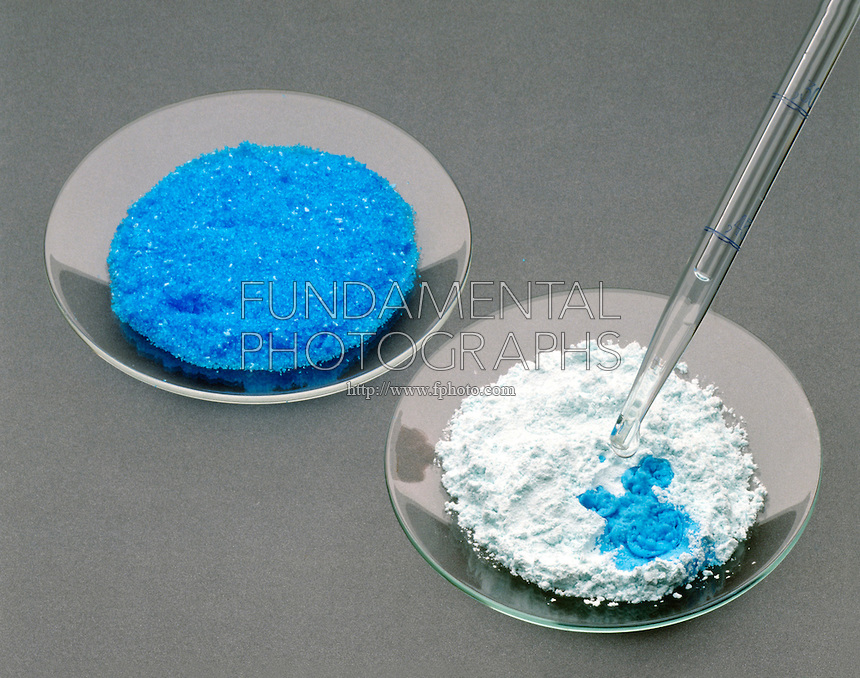Question #595d0
1 Answer
Here's my take on this.
Explanation:
As far as I know, potassium aluminium sulfate dodecahydrate,
The anhydrous salt
A deliquescent substance will actually continue to absorb water from the atmoshpere until it dissolves in this absorbed water.
On the other hand, an efflorescent substance will actually lose water to the atmoshpere by way of evaporation. This depends on how dry the air to which it is esposed is, but an efflorescent hydrate can lose all its water of hydration and eventually form the anhydrous salt.
I wasn't able to find any reference to potassium aluminium sulfate being classified as deliquescent or efflorescent, so I will say that it is neither.
Copper(II) sulfate pentahydrate,
The pentahydrate is blue in color. When you expose it to air, it will start losing water of hydration through evaporation and form a layer of anhydrous copper(II) sulfate,

The anhydrous salt is highly hygroscopic, which means that it will readily reform the pentahydrate when water is added.
Notice in the above image how the pale-green, white-ish color of the anhydrous salt turn back to blue when water is added.

